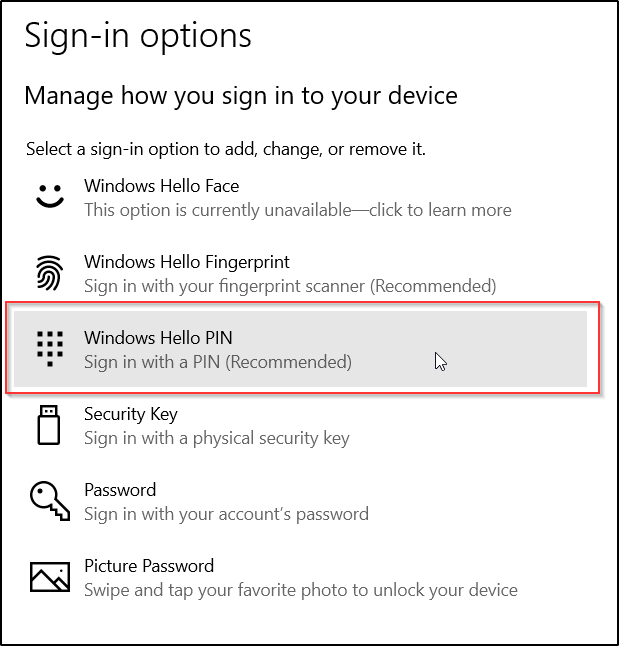
Allowed - Allow users to use uppercase letters in the PIN, but it's not required.This behavior also occurs if the setting isn't configured. Not allowed - Block users from using uppercase letters in the PIN.By default, this setting is Not configured. If required, user PIN must include at least one uppercase letter. For example, it's common practice to require at least one uppercase letter and one special character. Required - Users must include at least one lowercase letter in the PIN.Allowed - Allow users to use lowercase letters in the PIN, but it's not required.Not allowed - Block users from using lowercase letters in the PIN.If required, user PIN must include at least one lowercase letter. Specify a maximum PIN length for devices, from four to 127 characters. Specify a minimum PIN length for devices, from 4 to 127 characters. When set to Enable, the following settings are available: All other settings on the screen are then unavailable.Įnable - Select this setting if you want to configure Windows Hello for Business settings. All other settings on the pane are unavailable.ĭisable - If you don't want to use Windows Hello for Business, select this setting. Any existing Windows Hello for Business settings on Windows 10/11 devices is not changed. Not configured ( default) - Select this setting if you don't want to use Intune to control Windows Hello for Business settings. Before you beginĬreate a configuration profile. To learn more about identity protection profiles in Intune, see configure identity protection. You can find additional information about these settings in Configure Windows Hello for Business Policy settings, in the Windows Hello documentation.

This section not only describes how to create a tenant-wide configuration policy, but also describes the settings for the enrollment policy. To configure Windows Hello for Business tenant-wide, as part of device enrollment, see the section Create a Windows Hello for Business policy in Integrate Windows Hello for Business with Microsoft Intune.

With an Identity protection profile, you can configure settings on discrete groups of Windows 10/11 devices.

Identity protection profiles are part of device configuration policy in Microsoft Intune. This article describes Windows Hello for Business settings you can configure in an Identity protection profile. For more information, see Settings catalog. To see the settings you can configure, create a device configuration profile, and select Settings Catalog. Not all settings are documented, and won’t be documented. Intune may support more settings than the settings listed in this article.


 0 kommentar(er)
0 kommentar(er)
